Bass fishing is one of the most popular sports in the United States. The best lures and tactics used to catch bass varies based on the seasons and weather conditions. Most people have a favorite bass lure but it can take years to truly master all bass fishing techniques.
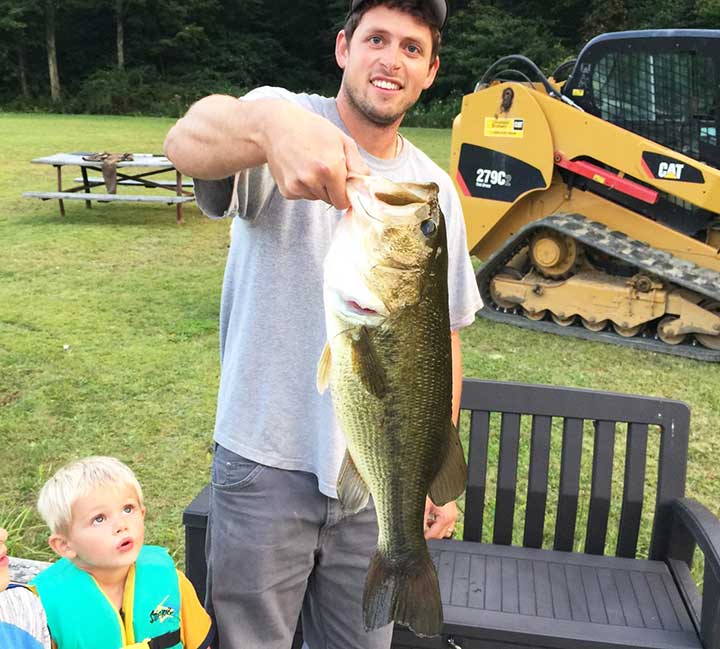
There are several common techniques people use to catch bass. The most common bass fishing method is using soft plastics including worms, creature baits, crayfish, tubes, and lizards. These can be fished weightless where the bait sinks slowly to appear as an easy meal for the bass. A sliding bullet weight or jig can be added to fish deeper in the water column.
The second most common way to fish for bass in with inline spinners and spinnerbaits. Spinners allow a large amount of water to be covered quickly. If bass are aggressively feeding this method allows for lots of water to be covered which quickly allowing for the best chance to catch fish.
The third most popular bass fishing method is with topwater baits. Bass topwater baits included poppers, jitterbugs, buzz baits, chatterbaits, and frogs. Other methods include using crankbaits and trolling with diving plugs. Live baits including worms, nightcrawlers, and minnows work great to catch bass. In most fishing competitions using live baits is against the rules though. Many anglers overlook using scented baits in competitions.
I have learned a lot about how to catch largemouth bass while preparing for and competing in bass fishing tournaments. I have fished in bass tournaments in Pennsylvania and New Jersey. For the most part, the angler that spends the most time on the water pre-fishing and learning bass behavior in the area wins the tournament.
In this article, I will list my favorite bass fishing lures in order of preference. There are definitely different conditions where I will try all of these on the list. If you agree or disagree feel free to leave a comment below.
Here Are the Best Bass Lures
1. Baby Brush Hog with Red Specks
Baby brush hogs are 4 inches in length and come with 12 per pack. Brush hogs are the same shape bait but are 6 inches in length and come with 8 per pack. Baby brush hogs come in over 40 different color patterns. My favorite colors are watermelon red, green pumpkin red, Junebug red, and black emerald. I like the baby brush hogs the better than the larger brush hogs for most situations.
Baby brush hogs are my favorite bass lure to use. The key to fishing with Brush Hogs is to be quiet. Very quietly approach an area and then realize that it is all about the “splash” literally. This lure makes an awesome splashing noise and bass come into investigate and find this lure slowly sinking in the water and simply can not resist. Even when bass are being lethargic and not hitting other lures, fish often still bite the baby brush hog.
On bright sunny days, when bass are not biting for most people is when they actually work the best. Cast this lure near Lilly pads, weeds, structure or near ledges. Watermelon red works best on bright days and in clear water. Green pumpkin red is probably the most versatile to work in all conditions. Junebug red works best in stained muddy water in rivers. Black emerald is the best color for low-light and night fishing. Adding scent to the bait is a good idea for night fishing and does not hurt during the day either.
Because baby brush hogs sink slowly they work best in water less than 6 feet deep. Cast it out and keep a very small amount of tension on the line so you can feel when the big bass engulfs the lure. If there is any movement in the line bring the line tight and set the hook! If a bass does not bite while it is initially sinking, it is not likely that bass will bite on the retrieve. Count to ten after the initial splash and then just crank the bait in fast to save fishing time. Obviously, if there is good structure the bait can be paused and twitched to see if a bass will take it during the retrieve.
A 20-pound braided line with a 5-foot 20-pound fluorocarbon leader is recommended. The leader line should be tied to the braided line with a line to line connection called a double uni knot. The heavy line helps when pulling out snags in lily pads and weeds. The braided line is thinner and lighter than mono which allows for further casting. The fluorocarbon makes the fishing line less visible to the fish. When slowly presenting baits to fish having less visible line is important.
When fishing tournaments it is good to have two poles with fluorocarbon leaders and offset hooks tied and ready to fish the Baby Brush Hogs. I like fishing them with conventional spinning reels, not baitcasting reels.
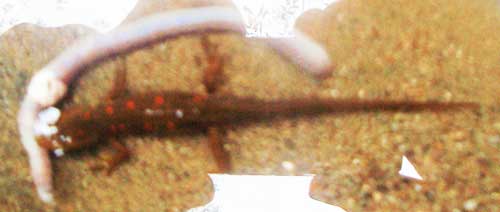
The newt or salamander above was found near a lake in New Jersey. In this case, the newt is eating a worm. Notice the red specs on the back of the newt. This looks very similar to a baby brush hog and the red spots are key.
Offset Hooks for Baby Brush Hogs
Size 3/0 offset hooks work great with baby brush hogs. Size 4/0 works well with the larger brush hogs. The baits are rigged Texas-style onto the offset hook. A bullet weight could be added on the line. However, if you are fishing a weighted bait there are better options on this list. Having the bait aligned straight on the hook is important. When pulling it through the water the bait should not spin.
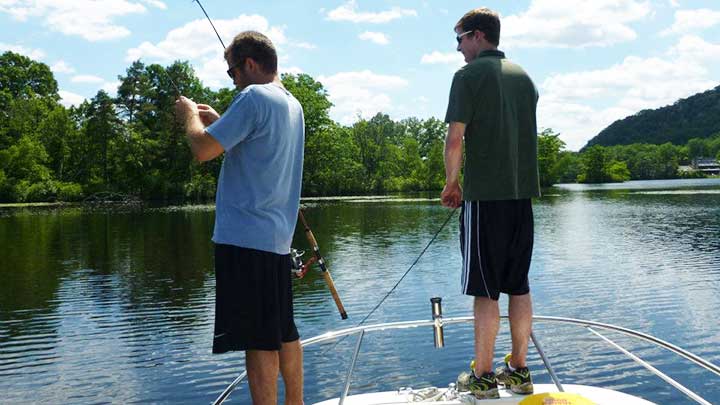
In the picture, my fishing partner Ryan O and I are bass fishing with baby brush hogs. Being patient and slowly working in different areas is very important when fishing these baits.
2. Mepps Spinner
Mepps spinners come in sizes from number 00 through number 5. For bass, the best sizes are number 3 which is 1/4 ounce, number 4 which is 1/3 ounce and number 5 which is 1/2 ounce. The most common blade colors are silver or gold but actually come in over 20 color variations. The hooks are dressed with a natural squirrel tail.
Mepps spinners are great bass fishing lures for people with low patience. When using spinners there is the constant action of casting and retrieving allowing for large areas of water to be fished quickly. This lure is best for water under 8 feet deep. The slower the spinner is retrieved the more the lure will sink into the water. It is a good idea to start reeling in as soon as the lure hits the water to get the blade spinning. The spinner can then immediately be reeled slower to get it to sink deeper.
Casting perpendicular to the shore is my favorite way to fish for bass with spinners. Fish are on the edges, especially during warm days in the springtime. Bass are enjoying the warmer water in the shallows and often chase down passing baits. Since the water is shallow they do spook easily. Make sure to approach the fishing spots very quietly. From shore, this method works particularly well. Working the way around a pond or lake with a Mepps spinner will typically catch some nice bass.
The advantage this lure has over soft plastics and most other lures is that it covers more water. If bass are feeding aggressively they will hit Mepps spinners! It is also easy to feel the bass bite and set the hook which makes this a great lure for kids. We have been using these spinners since we had the Zebco push-button reels as young kids.
If there are toothy fish in the lake such as pickerel, pike, and musky using this lure can be a problem because these fish love to bite spinners as well. When a toothy fish bites and there is not a steel leader the fishing line can easily be cut. A steel-leader leader might cut down on the number of bass that bite. However, I have caught plenty of bass while using a steel leader.
The bronze Mepps number 5 with a tail is perfect for big bass, especially when casting far in murky water. A silver Mepps number 3 with a tail is my go-to spinner to use in clear water and on sunny days. If you already like using these Mepps spinners give the Mepps Comet Mino a try.
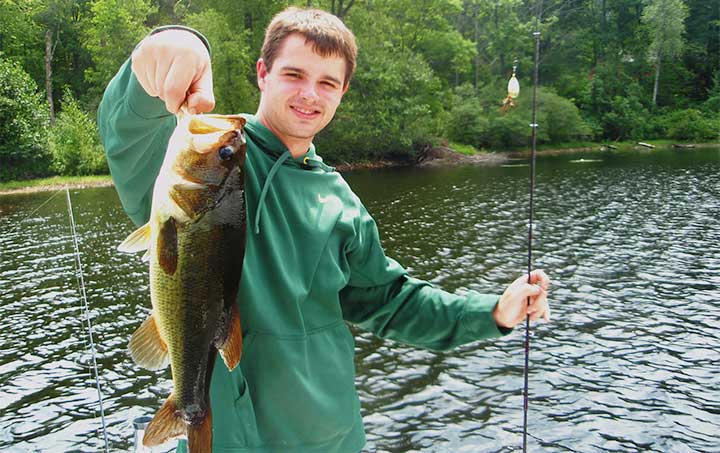
3. Crayfish Bass Jig
The Strike King Hack Attack Heavy Cover Jig Bait comes in .375-ounce, .75-ounce, and 1-ounce sizes. Color options include black-blue, blue-craw, candy craw, green pumpkin craw, Okeechobee craw, sexy craw, summer craw, Texas craw, and falcon lake craw. Sexy craw and falcon lake craw are the colors I like best. The Gamakatsu black nickel heavy wire hook is strong and good for pulling hard on big bass.
This is a heavy cover swim jig so travels well horizontally in the water column and also cuts through heavy weeds. The common fishing technique for these jigs is to be drifting over grass beds and pitching the jig about four feet in front of the drift direction. The boat is typically drifting sideways. The lure sinks to the bottom and the bass might bite while it is sinking. If not the jig is pulled 1 to 4 feet of the bottom two or three times before it is retrieved and pitched again. When the jig comes off the bottom the first time be ready to set the hook!
I learned about Crayfish Jigs by watching the competition during bass tournaments. Top ranking teams would use this lure and only this lure all day. Jigging for 4-6 hours does take a lot of effort on the fisherman’s part.
It can take time to locate weed beds that are holding fish. Once the bass holes with fish are found it is worth all the work. Generally, these jigs are used in water that is 6 to 12 feet deep with large patches of sod grass. The thicker the better. Jigging around shoals also works well. The key is knowing where the grass beds, structures, or ledges are located. This is why fishing often and becoming familiar with the lake is important.
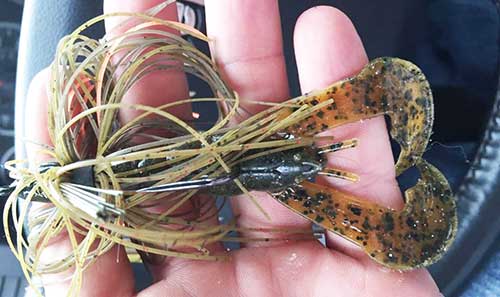
The picture above shows a swim jig with a crawfish body. These jigs most resemble a crayfish so that is the soft plastic I typically use for the body.
Green Pumpkin Crawfish Soft Plastic
The Zoom Super Speed Crawfish soft plastic is 3-3/4 inches in length. Good color options include Alabama, black red glitter, green pumpkin, and Junebug. Trim the first two notches off before putting it in the hook and the claws will extend out just past the skirt and flutter great in the water!
Liquid Mayhem Bass Crawfish Scent
Liquid Mayhem Bass Crawfish Scent comes in a 2-ounce tube. The paste contains natural crawfish and enzymes infused with amino acids and stimulants to encourage fish to strike.
Any bass lure works better with a scent but this is especially true for crayfish jigs and tube jigs. The gel-like paste can stay on lures for up to 30 casts. The formula is concentrated so a small amount is all that is needed. Soft plastic works well without scents but adding scent can encourage picky fish to bite and allow them to hold on the bait longer before try to spit it out.
Fish feed based on sight, vibrations felt in their lateral line, and through scent. Many anglers underestimate the importance of scented baits.
4. Zoom Worm Bass Soft Plastic
Zoom trick worms are 6.75 inches long and come with 20 per pack. These worms come in over 50 different color variations. My favorite colors are watermelon red for bright sunny days and clear water. Junebug is a great color for murky rivers and low-light conditions.
My preferred way to fish a trick work is weightless, Texas rigged, and very similar to a brush hog. A trick worm sinks a little faster than a brush hog which can be good in 5 to 7 feet of water. Any water deeper than 7 feet is it good to add a bullet weight against the worm. A Carolina rig with a weighted pegged two feet above the worm is another good option when fishing deeper water.
The greatness of the green trick worm became apparent to me when fishing with my friend Ryan O. We were fishing a big pond, perfect for a spinner, so I thought. The water got deep quickly from the shore and had some grass and deep Lilly-pads. I had an advantage because I would cast in all the good spots first. He would then come and fish the already been fished water and catch one bass after another after another. Sometimes three or four bass from the same small patch of Lilly-pads, it was ridiculous. Even though I got out fished that day, I learned a good technique so I was not complaining.
The best hooks for trick worms as the same offset hooks used with baby brush hogs. If you already like these trick worms then try curly tail worms because they also work great.
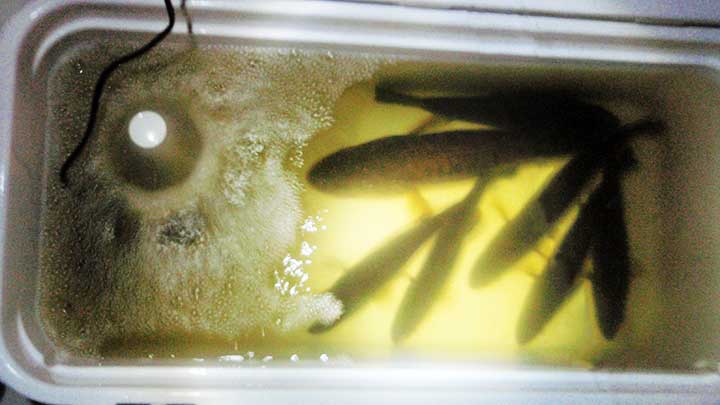
In the picture above are bass that were caught for a bass tournament. The boat did not have a live well so we used a large cooler and a fish saver pump aerator. This would keep the bass in good condition. If it is hot out the water does need to be replaced every 30 minutes or the fish could die. This is not ideal but I have fished bass tournaments with small john boats with only an electric trolling motor for power. It does not matter what kind of boat you have it only matters who catches the most fish.
5. Rapala Fat Rap Bass Lure
The Fat Rap size 05 crankbait is a 2-inch lure with a deep diving lip. The three common colors for this lure are perch, silver, and firefighter. This is a floating lure that is made out of balsa wood. It is made with super sharp VMC black nickel hooks. Each lure is hand-tuned and tank-testing to ensure they come ready to catch fish.
This exact lure in perch is what my family calls “Mr. Lucky”. We had one lure that single-handily caught multiple mutant size smallmouth bass in Lake Erie when I a kid. Those bass are still the biggest bass I have ever seen caught. To catch them we would actually troll in 20-40 feet of overwater depth. The listed running depth of the lure is 3-5 feet. If you let out about 100 feet of line and troll this lure will dive much deeper than that, probably around 20 feet.
This crankbait has been around a long time and likely inspired most of the others on the market. I like using lures that have a proven track record of catching fish. If you have never fished with Mr. Lucky, I would highly recommend giving this lure a try.
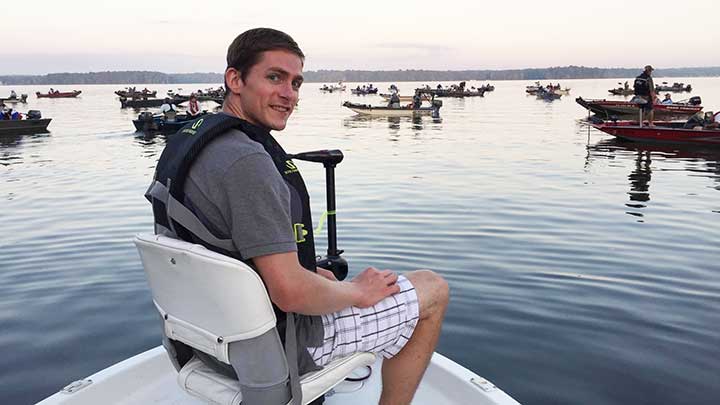
In the picture above my brother and I were fishing in a bass tournament that was about to start. This was in Lake Pymatuning in Pennsylvania.
6. Senko Bass Lure
Yamamoto Senko worms come in sizes 3-inch, 4-inch, 5-inch, 6-inch, and 7-inch. There are over 120 different color variations of the Senko. Two of the best and most popular are green pumpkin red flake and black blue-flake blue tip. Gary Yamamoto designed the Senko in the early 1990s and it has been one of the most popular bass fishing lures ever since.
The Senko is a very versatile soft plastic that has helped countless anglers win bass tournaments The bait is thicker than most reel worms and does not really look like any baits in nature. For some reason, though it triggers bass to bite. It is not one of my favorite baits mostly because it makes too loud of a splash. Properly using a baitcasting reel to slow the bait before it enters the water can avoid this though. I find it is best to use it in water that is more than 5 feet deep. It sinks faster than most soft plastics so it can be fished weightless to a depth around 10 feet of water. It is a good bait to add weight to and fish at deeper depths.
The video below shows more ways than I knew there were to rig a Senko. One of the most popular ways to rig a Senko bait is wacky style. A good way to rig wacky style is with worm o-rigs. One unique method for rigging Senkos included using worms blades to add flash and vibrations.
The video below shows three ways to rig a Senko. These include the weightless Senko, wacky rig Senko and mojo rig Senko. It also shows what those rigs look like underwater.
7. Original Rooster Tail Bass Spinner Bait
The Original Rooster Tail comes in size 1/32 ounce, all the way up to 1-ounce. This is known to be a great lure for catching trout. With the larger sizes and over 100 different color options it also makes an incredible bass lure. Good color options include Mayfly, black, hammered frog, and white. The 1/16 ounce size is perfect for catching small bass in pounds and a 1/2 ounce size is good for casting far in lakes. I have never used the 1-ounce size but it seems like it would be fun to try.
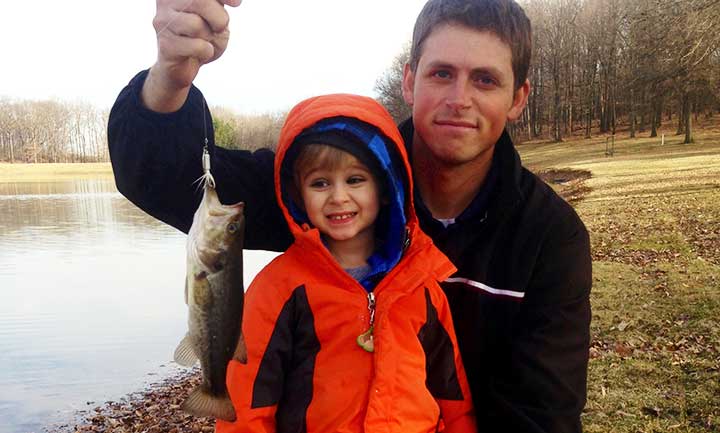
In the picture are my brother Mark and my nephew. A 1/16 ounce white rooster tail was used to catch this little bass in a pound in the early spring.
8. Rebel Popper Bass Lure
The Rebel popper comes in 2-1/2 inch which is 1/4 ounce and 3-inch size which is 1/2 ounce. Color options include bone, bubble gum, foxy momma, foxy shad, rainbow, and Tennesse shade.
I like using topwater poppers best in low-light situations. Most often I use them between sunset and dark. In the evening many nocturnal creatures like frogs, mice, salamanders, insects, and crayfish start to come out of their daytime hiding spots. Bass are use to this activity and like ambushing prey and feed aggressively at dusk. It takes a while for their eyes to adjust to the day so it is important to work the bait slowly. The best way to work a popper at dusk and at night is with a few seconds of pause between each pop or twitch.
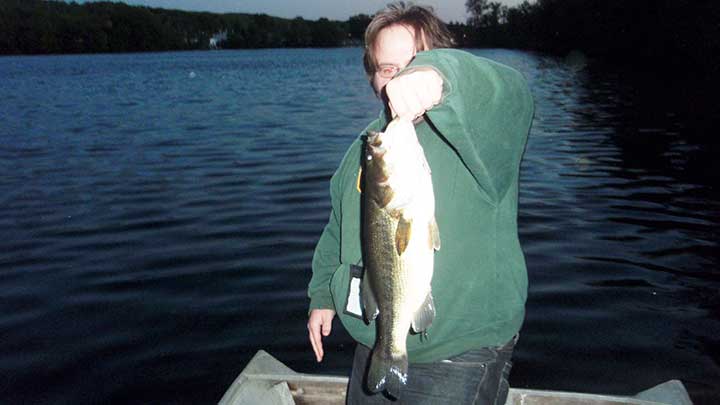
In the picture is my friend Mitch with a nice bass he caught with a Rebel popper right at dusk. He was being very patient with the popper along a rocky ledge and it paid off.
9. Z-Man Bass Chatterbait Jack Hammer Series
Z-Man chatterbaits come in size 3/8 ounce, 1/2 ounce, and 3/4 ounce. Color options include black-blue, chartreuse-white, clearwater-shade, green pumpkin shade, white, and Hite’s hot craw. The hammer series is the highest quality hand-made chatter baits used by professional anglers. The price is around $18 per bait. Gamakatsu heavy wire flipping hook is used with a double wire trailer keeper that helps prevent soft plastics from sliding on the hook.
These can be fished like a crawfish jig where it is lifted off the bottom and then allowed to flutter back to the bottom. The chatterbait can also be fished with a slow constant retrieve like a spinnerbait. A swimming senko bait tail can be added to create a larger profile and amazing swimming action to the bait. These chatterbaits start vibrating quickly and swim with a side-to-side motion that creates vibrations that the bass can feel with their lateral line. That makes this a good bait in the dark and in low-light situations. Chatterbaits also work well during the day.
In the video below Ronald Martin discusses the best ways to use a chatterbait for bass fishing.
10. Umbrella Rig Bass Lure
This Alabama umbrella rig has 5 arms and 8 blades. Swimbaits are 3.5 inches long and are placed on 1/4 ounce jigs. The total weight of the rig is around 3 ounces. These shad are black and white and the blades are silver.
Umbrella rigs are baits that work so well they are banned in most major bass tournaments. State fishing laws also need to be checked before using 5 hooks on one fishing rig. If 5 hooks are not allowed teaser baits without hooks can be used from some of the shad. When trolling large umbrella rigs for striped bass it is common to just use one hook on the trailing center bait. These rigs also work great at caching freshwater striped bass and hybrid striped bass.
Casting umbrella rigs are typically done while using a 50-pound braided line on a 5:1 gear ratio baitcasting reel. Rods should be heavy or extra heavy stiffness. The main problem people have with these rigs is getting them tangled or hung up on the bottom. Be aware of the structure and debris in the water when trowing these rigs.
The best time to use umbrella rigs is in the spring and summer when bass are feeding heavily on shad. This large bait imitates a school of shad swimming. Bass attack these baits and it is not uncommon to catch more than one fish at a time.
11. Zoom Tube Jigs Smallmouth Bass Lure
Zoom super salty tube jigs come in sizes 3.75-inch and 4.25-inch. Color options include disco candy, green pumpkin, root beer-green, watermelon red, watermelon seed, and pearl white silver. All zoom baits are impregnated with salt for added scent.
Tube jigs imitate one of the smallmouth and largemouth bass’s favorite food which is the crayfish. Smallmouth bass are typically found close to the bottom in sandy, gravel, or rocky areas. Tube jigs word perfect for these areas. Keeping the jig swimming along the bottom gives it the best chance and finding its way in front of smallmouth bass.
These tubes are great baits to fill up with the Liquid Mayhem crawfish scent previously shown. The scent can be placed within the tube and on the outside. This large amount of scent that can be added to tube jigs differentiates it from other crayfish-style swim jigs.
Tube Jig Hooks
VMC dominator tube jig hooks come in size 1/16 ounce, 1/8 ounce, 3/16 ounce, 1/4 ounce, and 3/8 ounce. The eye of the jig is set at a 60-degree angle. These are made with high-carbon needle cone point hooks in size 4/0. Having an angled eye and a large shank hook is perfect for tube jigs. Four jigs come per pack.
12. SteelShad Bass Blade-Bait
Steel Shad blade baits are 2-3/4 inches long and weigh 3/8 ounce. Color options include Tennessee shad, purple, sexy shad, white shad, and yellow shad. These come with double stainless steel VMC treble hooks.
Blade baits are awesome because they flutter on the way up and on the way down. This is a particularly good bait for smallmouth bass. It can sink deep and has a strong presence in the water with lots of flash and vibration.
These work best in rocky areas because otherwise, they pick up weeds. This is not a lure I use often but there are defiantly spots where blade baits have the advantage. It works particularly well in the great lakes on smallmouth bass and walleye in 20-40 feet of water.
13. Powerbait Power Minnow Scented Bass Jig
The PowerBait Power Minnow is a 1/8 ounce jig with a 3-inch scented bait attached. Black shad and fire tiger are the two color options. These baits come with two jig heads and 8 shad bodies. From Bass Pro Shops these come in a larger quantity but without the jig heads.
Berkley power minnow is similar to gulp baits which are scented. Not many people use live minnow for bait and these are a great alternative. When bass are feeding on shad this bait is a great option. The two-inch version works well for crappie and trout while the three-inch version works well for bass and walleye.
14. Gulp Nightcrawler Bass Bait
Berkley Gulp nightcrawlers are 6-inches in length and come in a 1.8-ounce glass jar. The two color options are natural or red wiggler. Gulp earthworms are a smaller version of the bait and are 4 inches in length. This bait is made with all-natural material and is biodegradable.
When I was younger I came to the conclusion that all freshwater fish eat worms. Also, all saltwater fish eat baitfish. For the most part, this is the case and these basic baits are always good to use when fishing. With so many baits and lure options out there, people can overlook the most basic options. I highly recommend using worms for kids. The only real problem with worms is that panfish often find the bait before a big bass.
Glup worms disperse over 400 times more scent than other soft plastics. These baits are made to look, feel, and taste like live bait.
15. Arbogast Jointed Jitterbug Bass Lure
Arbogast jointed jitterbug clicker comes in sizes of 2-1/2 inch 3/8 ounce and 3-1/2 inch 5/8 ounce. Colors options for the jitterbug include black, perch, white, firefighter, and frog white belly.
Jitterbugs are classic topwater lures that are known to work well on bass and northern pike. This jointed jitterbug tail moves side to side during the retrieve to create a clicking noise. If you are a fan of the basic jitterbug give the jointed jitterbug a try.
This is another bait that excels at dusk and at night. The advantage this bait has to surface poppers is that it works well with a steady retrieve speed. Start with fast and steady reeling and if that does not catch fish slow down the retrieve speed.
16. LiveTarget Bass Frog Bait
Livetarget frogs come in 1-3/4 inch which is 1/4 ounce, 2-1/4 inch which is 5/8 ounce, and 2-5/8 inch which is 3/4 ounce. Color options for the frog bait include emerald brown, yellow-black, brown-black, green-yellow, tan-brown, white, and fluorescent green-yellow. Hooks are set in a weedless design which makes this lure great for thick lilypad fishing spots.
If you do not have a frog bait in your tackle box I am not sure you classify as a bass fisherman. These baits do not catch as many basses as other lures. However, fishing topwater is about the much-anticipated excitement of watching the bass strike on topwater. Also, bass that are caught on frogs tend to be much large than with other baits. Frogs are topwater baits that work best at dusk but defiantly catch bass during the day as well.
If you are quiet and sneak up on the fishing spot frogs work really well. I have seen real frogs jump into the water and get eaten almost immediately be bass. If possible try and bring the bait into the water from the shore. Make short twitching motions with the bait as if it is a real frog kicking. These short pulses traveling through the water are often what catches the attention of bass and can bring them to the bait from long distances away.
17. Booyah Pikee Bass Spinnerbait
The Booyah Pikee weighs 1/2 ounce. The bait features the Vibra-Flx wireframe and Silo-Tek skirt. A 12 steel leader is included with this bait for northern pike, musky and pickerel fishing.
This has double willow blades which is the most popular combo for two-blade spinnerbaits. Willow blades are typically retrieved faster than colorado blades. This particular design works best reeling fast overtop of vegetation. For this reason, this design is marketed as a pike lure. I actually stopped using spinnerbaits in New Jersey because they would catch too many pickerel.
18. Strike-King Mini-King Bass Spinnerbait
The mini-king spinnerbait is 1/8 ounce and has a single hammered colorado blade. Color options include white, black, black-blue, chartreuse-white, red and sun perch.
This is a small spinnerbait but it is the one that I use most often for bass. This bait can be fished slower and therefore a bit deeper than an inline spinner. In black, this works well for nighttime fishing. The hammered colorado blade allows the bait to be retrieved slowly and still put off good vibrations. The small size makes it so that at night if the bass strikes at the blade that is putting off vibrations it still has a good chance of getting hooked.
19. Johnson Beetle
This Johnson beetle is 1-1/8 inches and weighs 1-16 ounce. It comes with a nickel-plated colorado blade and three grub bodies. Grub body color options include black, white, yellow, and green.
This mini spinnerbait catches surprisingly big bass. I fish this bait similar to inline spinners by casting perpendicular and close to the shore. In the spring when the water on the edges is warmer this works particularly well. If you fish in small ponds or small lakes this is a great lure to use. Johnson Beetles are also commonly used to catch crappie.
20. Heddon Chugn-Spook Junior Bass Topwater Lure
This Foxy Shad Chug’n Spook Jr is 3-1/2 inches in length and weighs 1/2 ounce. The scooped mouth allows it to spit water and make a popping noise. A single metal bead rattle is built-in near the back of this bait. Other color options include bullfrog, black shiner, baby bass, and bone.
Chug’n Spooks are good for a walk the dog style retrieve. To fish walk the dog you are twitching the front of the lure back and forth. This is done by twitching the bait and leaving just a little bit of slack in the line during each twitch. This looks like an injured fish or frog moving along the surface.
21. Heddon Super-Spook Jr Bass Lure
This babby bass Heddon Super Spook Jr is a 3-1/2 inch topwater bass bait that weighs 1/2 ounce. This lure also comes in redhead, bone-silver, blue chrome, bone, clear, and black shore shad. A single bead rattle is built-in near the back of this bait. The full-size super spook is 5-inches and weighs 7/8 ounce.
This Super Spook Jr is fished very similarly to the Chug’n Spook. Walk the dog style retrieves work best. This lure works well on those perfectly calm days where too much splashing could actually scare fish. This lure can be cast far and is able to cover lots of water.
With the big treble hooks hanging down it does now work well in thick weeds. A loop knot if the preferred knot style to allow for easy side-to-side motion when twitching the bait.
22. Rapala Husky-Jerk Bass Jerkbait
Husky Jerks come in sizes HJ06 which is 2-1/2 inches, HJ08 which is 3-1/8 inches, HJ10 which is 4 inches, HJ12 which is 4-3/4 inches, and HJ14 which is 5-1/2 inches. Good colors for these crankbaits includes baby bass, glass minnow, glass perch, Helsinki shad, and yellow perch. These are neutrally buoyant slender lures with loud rattles.
Husk Jerks are perfectly balanced in the water. If you stop the bait it stays perfectly vertical and suspended in the water. When twitched this allows for the most realistic injured fish look of any bait I have seen.
Husky Jerks are my favorite baits to use on Northern Pike. They also work great on bass and walleye in shallow water.
23. Rapala Rattlin Bass Fishing Lure
The Rapala Rattlin comes in size RNR04 which is 1-1/2 inches, RNR05 which is 2 inches RNR07, which is 2-3/4 inches, and RNR08 which is 3-1/8 inches. Color options for this rattle bait are baby bass, bluegill, firetiger, red crawdad, shad, and silver. Treble hooks are black nickel and made by VMC.
This lure is very similar to the classic Rat-L Trap. The Rapala Rattlin is a sinking bait that has loud bb’s within the lure to create a rattle as the bait wobbles back and forth. The pitch and frequency of the rattle as the bait wobbles is what makes this lure unique and effective.
24. Strike King KVD Bass Crankbait
This Strike King KVD square bill crankbait size 1.5 is 2-1/2 inches in length and weighs 7/16 ounce. Good color options for this crankbait are sexy shad, chrome sexy shad, natural beam, firetiger, and gizzard shad.
KVD square bill crankbaits are similar to the Rapala fat rap but has a larger profile body and does not run as deep. The swimming depth of this lure is listed at 3 to 6 feet. This is great for covering mid-depth water 5-10 feet deep to help find out where the fish are located.
Medium depth crankbaits work best when fishing rocky bottom or when fishing in early spring. That is because there are fewer weeds in the water the bait to get caught in. A perch color like firetiger or natural beam are my favorite colors to use in lakes with a lot of perch. Sexy shad or gizzard shad work great when bass are feeding on baitfish.
The video below lists ten tricks for bass fishing. Examples are water temperature, finesse rigs, crankbaits basics, and bait colors.
25. Rapala X-Rap
The Rapala X-Rap lure comes in size XR04 which is 1-1/2 inches, XR06 which is 2-1/2 inches, XR08 which is 3-1/8 inches, XR10 which is 4-inches, and XR12 which is 4-3/4 inches in length. Color options include clown, glass ghost, gold, hot pink, perch, silver, and rainbow trout. This is a suspending bait with a rattle.
This crankbait can be thought of as a larger profile Husky Jerk that runs a bit deeper. When pausing the bait it is neutrally buoyant and rolls which can trigger bites. This lure is also known to work well on striped bass and hybrid striped bass.
26. Arbogast Hula-Popper Bass Topwater Lure
Hula poppers come in sizes 1-1/4 inch, 1-3/4 inch, 2-inch, and 2-1/4 inch. Color options for the popper include black, bass, fire tiger, frog white belly, frog yellow belly, perch, white-red, and bullfrog.
The Hula popper is an ultra-light bass bait that has been sold since 1941. It has a large scoop on the front that makes a deep popping sound in the water. These work during the day or night but are best at dusk. These baits would not still be sold if they did not catch fish. Ask any seasoned angler about the hula popper and I am sure they will have a good story.
27. Booyah Bass Buzzbait
This Booyah buzzbait is a 1-1/4 ounce lure with a 4/0 Mustad hook. The blade itself is painted aluminum. A 55-strand silicone skirt is also included. Color options for this bait include black, snow white, pearl white, citrus, chartreuse, and limetreuse.
Booyah Buzz baits are quality and have a design that allows it to plane on top of the water quickly and at low retrieval speeds. The clacker on this particular buzz bait is unique. It sends vibrations and noise into the water. Buzzbaits work best when bass are feeding aggressively. When this is the case they are a great bait to throw in shallow depths to cover lots of water quickly. These baits work best at dusk. Buzz baits are great to have and are a fun way to catch bass. However, I see people overusing buzz baits. If it is noon and the bite is slow buzz baits will scare away more bass than they catch.
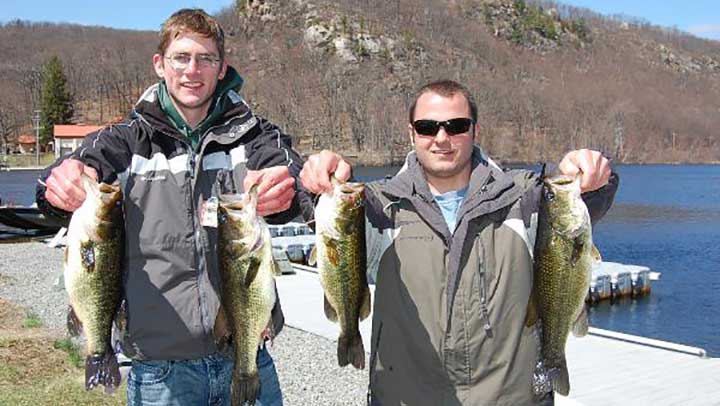
In the picture above, Ryan and I are holding bass we caught during a spring bass tournament in New Jersey.
Frequently Asked Questions
What is a bass favorite food?
Bass are opportunistic predators and will eat pretty much whatever they can fit in their mouths. Big bass most commonly eat baitfish like shad, alewife, ciscoes, shiners, perch, creek chubs, sunfish, bluegill, and even other smaller bass. Juvenal bass typically feeds on smaller food like aquatic insects, flying insects, crustaceans, worms, and tadpoles. Large foods bass eat occasionally include snakes, mice, moles, rats, birds, and bats. The favorite food for smallmouth bass is definitely crayfish.
What smell attracts bass?
Bass do have a strong sense of smell using their nostrils which helps them find food and their home stream during spawning season. Every food bass eats have some natural scent associated with it especially worms, frogs, salamanders, and baitfish. Even humans can smell these.
Bass are use to getting a scent as they approach the bait and as they crush the bait. If it smells unnatural like gasoline or sunscreen bass might not strike or quickly spit the bait. The most common scents added to bass baits are salt, amino acids, garlic, anise, fish oil, real bait like crayfish, nightcrawler oil, and shrimp. Other great scented baits like PowerBait and gulp alive are proprietary so we do know exactly what is in them, except that they work.
Bass do mostly feed on sight and by vibrations felt their lateral line. You definitely can catch bass on fast-moving poorly scented bait. However, on those cold front days when bass are being picky, adding scent can definitely encourage bass to strike. Fish that heavily rely on scent for feeding include catfish, trout, walleye, halibut, and sharks.
Why do bass fishermen use Baitcasters?
Bass fisherman use baitcasters for two reasons. First, it allows for tension to be added to the lure when casting. This can be with the resistance provided in the reel or by adding resistance with the thumb. The added resistance allows the bait to be gently set into the water when casting heavy lures. The second advantage is that baitcasting combos are better set up for jigging. The eyes on a baitcasting rod face up and a stiff rod allows for torque to quickly be applied to the bait. This also helps when pulling jigs through thick cover.
That being said I prefer spinning tackle for most cases. A spinning reel allows the lure to cast with almost no resistance allowing the lure to cast far. It is also easier to have the lure sink without disturbing its natural fall. Do not think that just because you are bass fishing you need a baitcaster reel.
What are the best lures and baits to catch bass in ponds?
My favorite lures to use in ponds include baby brush hogs, plastic worms, mepps spinners, real worms, and creek chubs. If you can catch creek chubs in a local stream they catch monster bass in ponds.
Fishing ponds are the best in spring and summer after sunny days. Bass are located near the edges of the pond where the water is warmer. By casting near the edges and retrieving the lure perpendicular to the shore allows the best water to be fished. Be quiet when fishing because the fish can easily be spooked away from the sides.
Can you catch bass at night?
Yes, you can absolutely catch bass at night. Bass feed actively at night so it is just about fishing the correct bait. The best time to fish at night is in early summer during a bright moon. Use dark lures as they provide the highest contrast. A bait that provides scent, vibrations and can be fish slow is ideal. Common baits used are surface poppers, chatterbaits, and crankbaits with rattles. Live baits like minnows and worms also work well. Adding and underwater light can help attract zooplankton, aquatic insects, and baitfish. All this action can then attract bass into the area.
Does live bait catch bass?
Live bait like minnows, creek chubs, crayfish, and worms are great baits to catch bass. It is more work and artificial lure can usually match catch rates of live bait. It is against the rules in most bass tournaments to use live bait. Scented baits are allowed though so don’t overlook adding scent to the lure or bait.
What is the best bass lure for summer?
The best bass lure for summer is definitely the baby brush hog. The Lilly pads have grown into substantial cover by then and are a great place to find bass. Many anglers struggle to catch bass on bright sunny days in the summer but that is where the brush hog excels. When it is sunny bass to not travel as far to strike baits so make sure you drop the bait near every small hole that looks good.
What attracts bass the most?
Sight attracts bass the most. When a bass can see a lure or bait there is the highest chance that it will strike the bait. Feeling vibrations with their lateral lines attract bass the second most. As long as it is not a bright sunny day bass will chase down a bait they feel hit the water from about 20 feet away. This makes catching aggressive bass pretty easy on some days. The scent of bait is the third way a bass finds food.
Captain Cody has worked on charter fishing boats in the Florida Keys, Virgin Islands, and Alaska. Growing up in Pennsylvania Cody has also done extensive freshwater fishing including bass fishing tournaments. Cody strives to provide detailed information about the best fishing gear and tactics to help both novice and experienced anglers have a more productive and enjoyable time on the water. Cody also has a background in aerospace engineering and neuroscience but really only takes pride in being good at one thing and that is fishing!

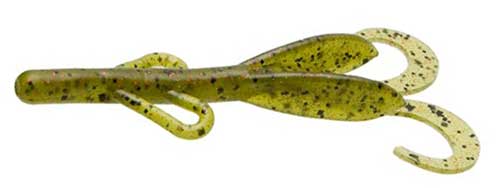

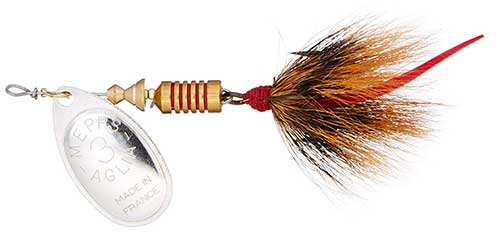
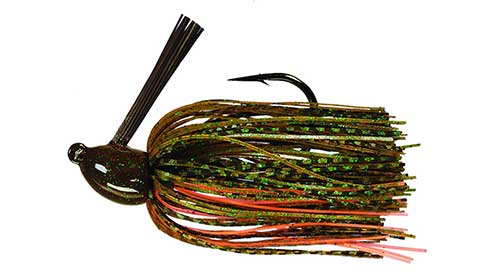
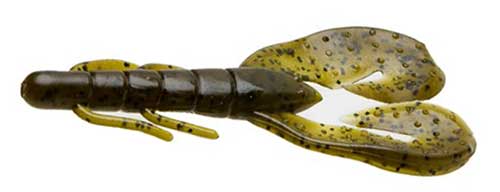
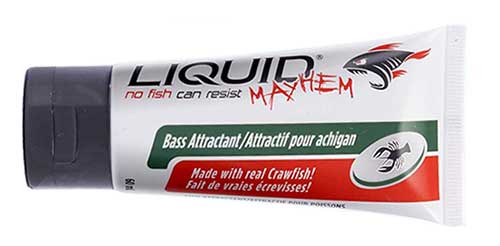
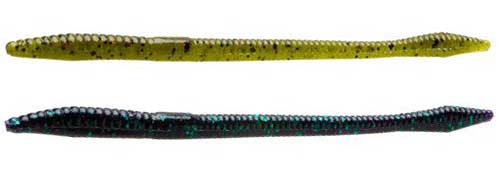
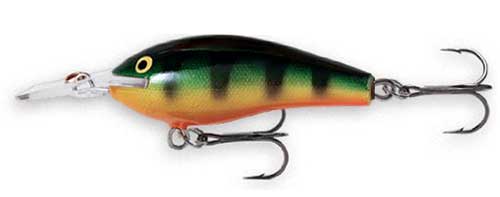
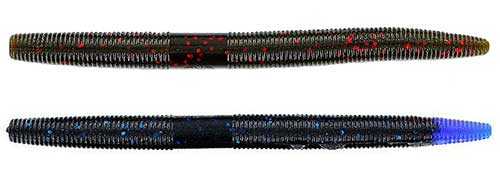
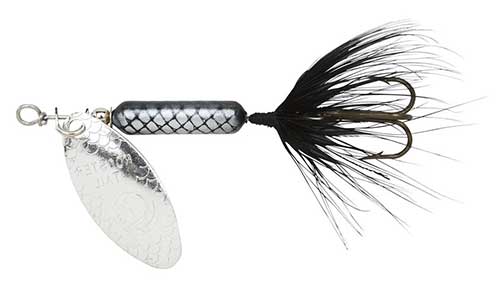
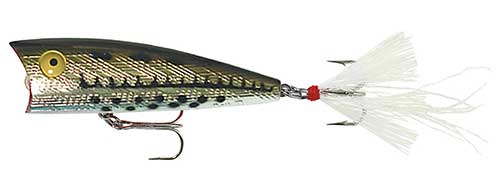
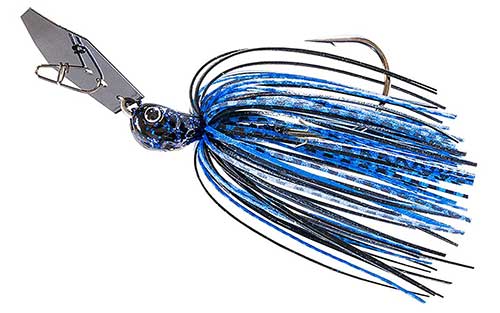
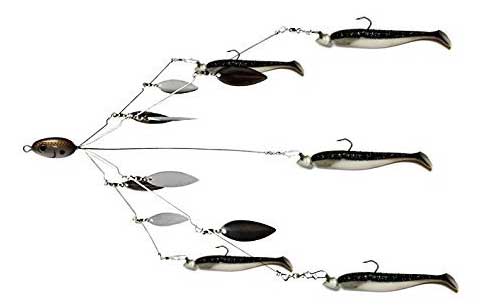
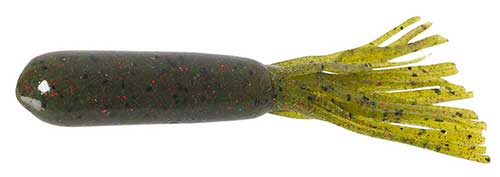
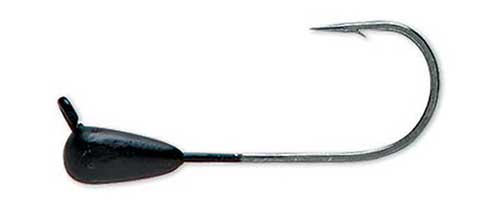
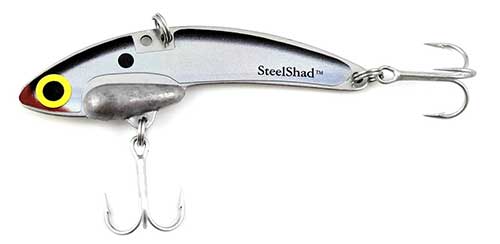
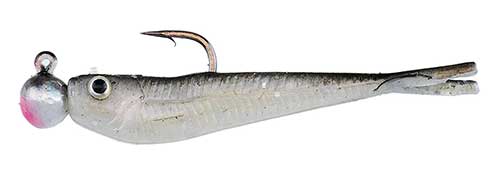
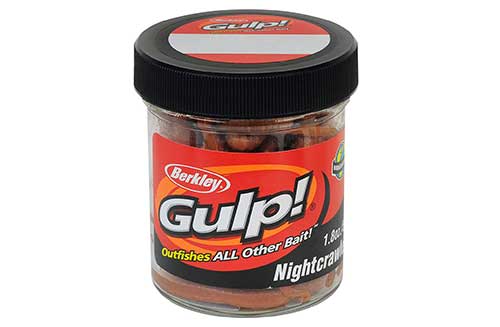
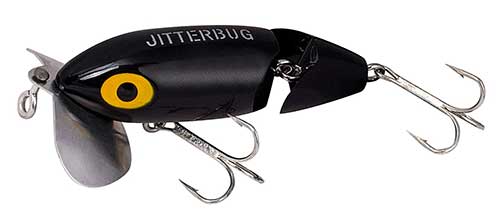
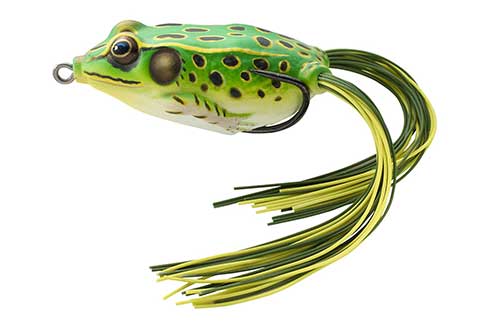
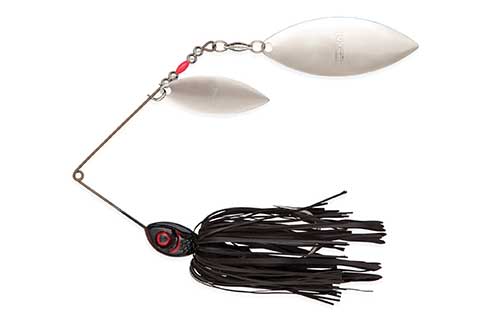
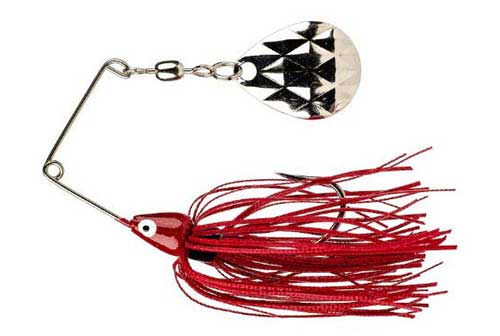
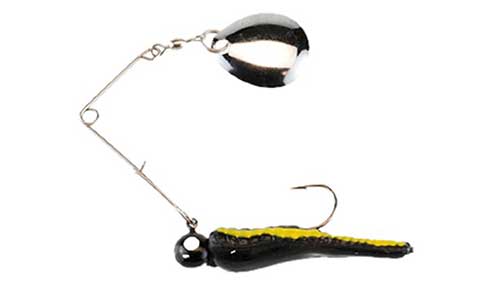
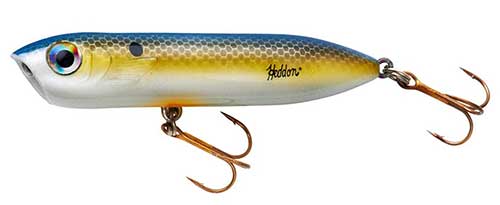
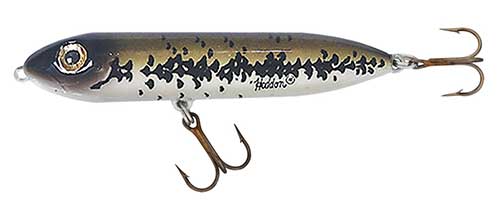

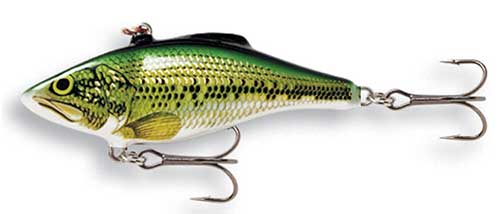
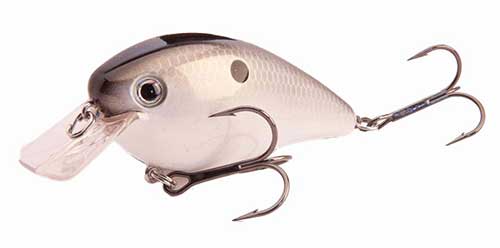

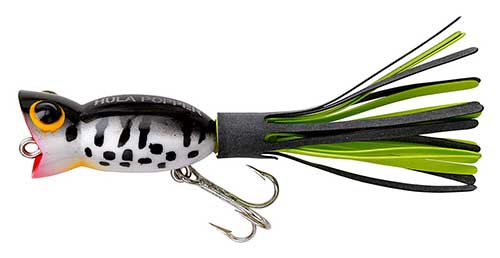
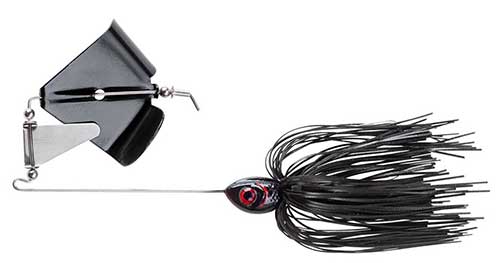
Cody I am very impressed about your knowledge regarding bass fishing and the different lures… I actually learned a lot even though I have not been fishing for many a year. Your grandpa Wabbie and I used to fish several of the Wisconsin lakes probably 50 years ago… It always was a good time.
Nice, sounds like some fun fishing trips!
It is fun fishing!